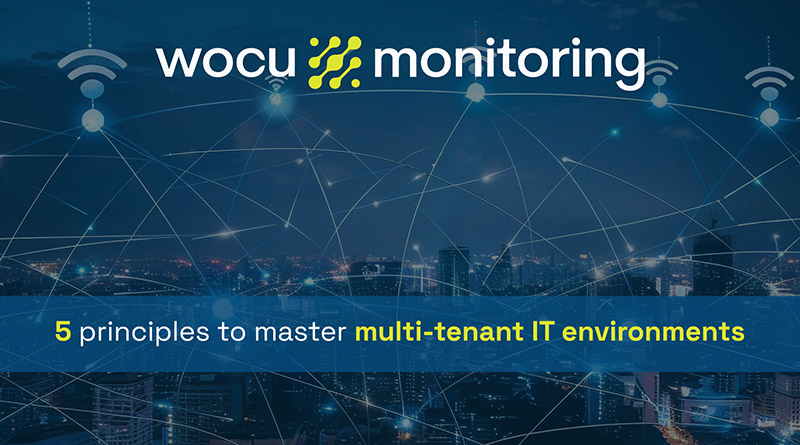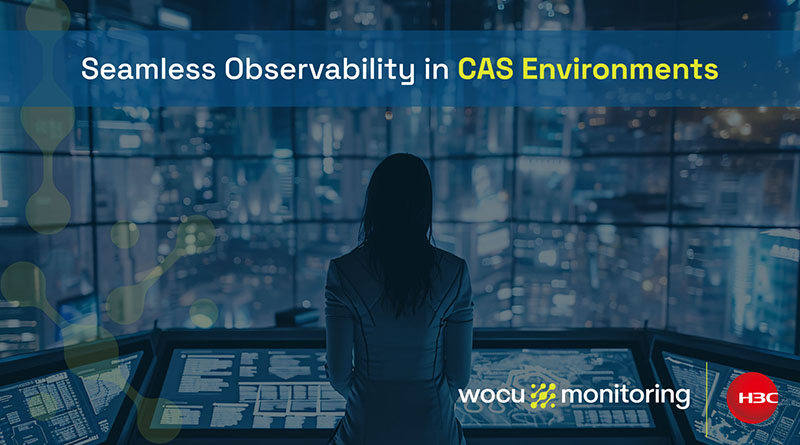In recent years, many organizations have shifted toward increasingly complex operational models, where a single IT infrastructure serves multiple clients, business lines, or user groups.
This scenario—common among Managed Service Providers (MSPs), system integrators, and large enterprises—presents a key challenge: it’s not enough to scale; you must scale efficiently.
According to Gartner, by 2028 more than 40% of leading companies will have adopted hybrid architectures in critical business workflows, up from just 8% today.
This technological shift demands unified and scalable IT monitoring platforms, capable of operating in multi-client environments with full visibility, traceability, and control.
Managing multi-client and multi-user environments brings specific challenges: properly segmenting information, ensuring traceability for every action, meeting regulatory requirements, and avoiding tool proliferation that increases costs and fragments the global view of the infrastructure.
In this context, having a truly unified and scalable IT monitoring platform is no longer a technical choice—it’s a strategic decision.
Operational Efficiency: More Than a KPI
According to Oxford Economics (via TechTarget), a single hour of downtime can cost an organization more than $540,000, making operational efficiency a critical priority in any multi-client, high-demand IT environment.
Operational efficiency has become one of the most important—yet often invisible—indicators in IT infrastructure management.
It may not appear on dashboards, but it directly affects key metrics such as Mean Time to Resolution (MTTR), service availability, and overall operating costs.
True Multi-Tenant Architecture: The Foundation of Efficiency
A recent report estimates that the global value of the multi-tenant data center market will grow from about $48 billion in 2024 to over $91 billion by 2030, showing the scale of the shift toward shared infrastructure models.
However, not all platforms are built for multi-client environments.
A robust monitoring solution must be based on true multi-tenant architecture, capable of securely, efficiently, and independently managing multiple environments.
A representative example could be a Managed Service Provider (MSP) operating in sectors such as healthcare and public administration.
By deploying a unified observability solution with a true multi-tenant architecture, it could monitor more than 20 clients with differentiated needs, provide segmented access, maintain traceability, and comply with regulatory standards—without duplicating infrastructure.
As a result, it would reduce MTTR by more than 40% and improve the operational efficiency of its support teams.
A unified monitoring solution should at minimum provide:
- Strict separation of data and permissions between clients, areas, or users.
- Custom tenant views with granular access to relevant information.
- Configurable observability modules from a single central console.
- Horizontal scalability without redesigning the architecture.
We are clear on this point: observability tools must provide context, traceability, and automated predictive intelligence, enabling IT teams to anticipate incidents before they impact the business.
Observability vs. Monitoring in Shared Environments
They may sound similar—but they’re not the same.
Monitoring collects events, metrics, or logs to detect if something is wrong.
Observability helps understand why it happens, correlating signals across systems, detecting anomalies, and automating responses before the user notices an impact.
In multi-client environments, this distinction is even more critical.
Multiple dependencies, diverse operational structures, and shared data flows require an additional layer of intelligence.
Investing in observability not only improves visibility—it helps optimize resources, anticipate incidents, and reduce MTTR without overstaffing technical teams.
The Value of IT Solution Integrators
In complex multi-client environments, technology alone is not enough.
The role of the IT solution integrator is key to ensuring platforms are properly deployed, aligned with client processes, and adapted to operational and business requirements.
Their knowledge of infrastructures, workflows, and internal priorities ensures that observability and monitoring deployments go beyond technology—driving true organizational impact.
In summary, in multi-client and multi-user environments, operational efficiency is not a byproduct—it’s a strategic decision.For CIOs managing shared infrastructures, the challenge is no longer gathering data, but extracting context, acting quickly, and maintaining a unified view of the service.
That’s only possible with a platform designed to operate in demanding and distributed environments.
Is your infrastructure ready to operate in multi-client mode without losing efficiency or visibility?
Our platform is built to deliver observability across large-scale infrastructures and support the operational evolution demanded by multi-client environments.




